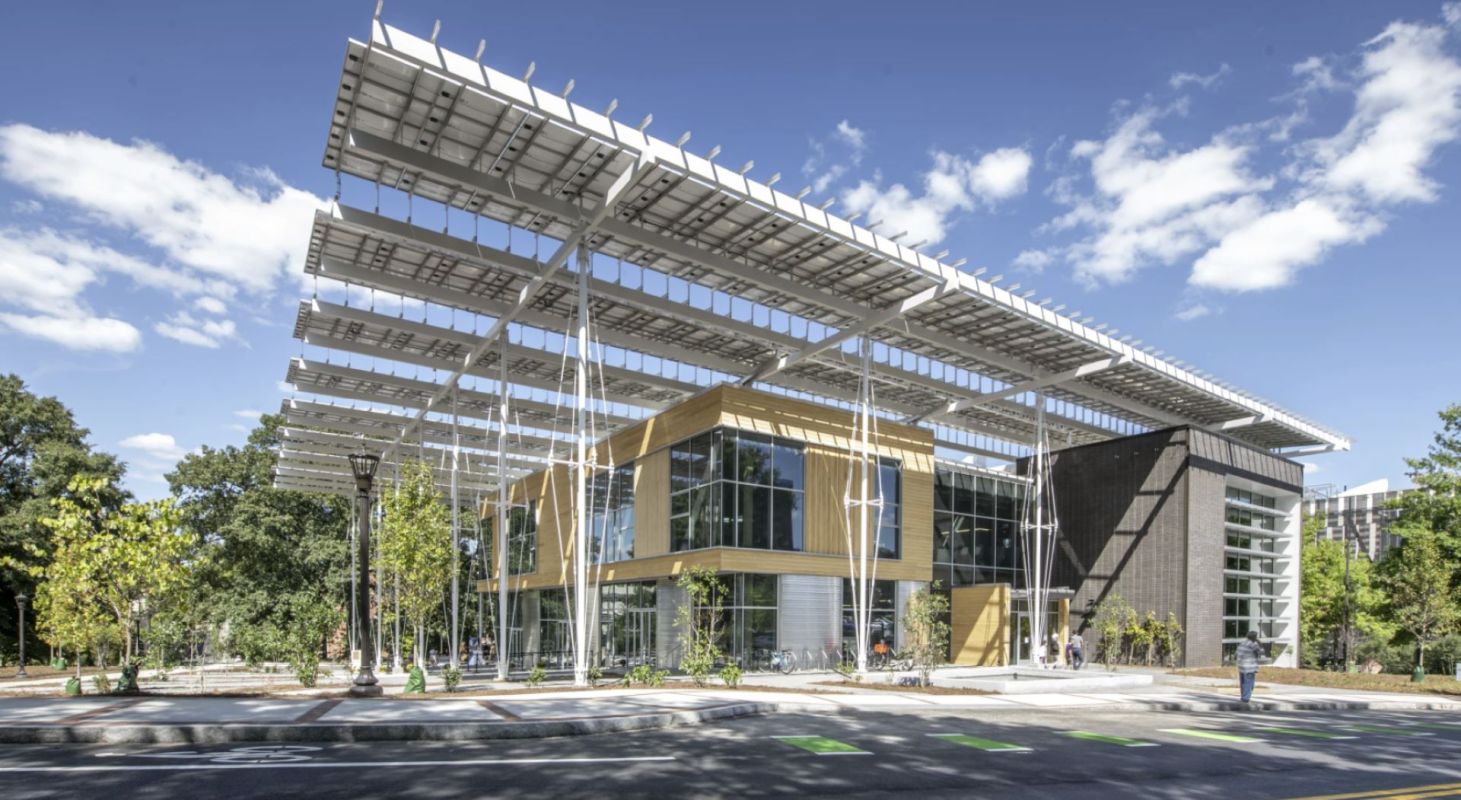People from around the world have come to see a "living building" in the state of Georgia that produces more energy than it consumes.
The Kendeda Building for Innovative Sustainable Design opened fully to classes in 2020 after the Georgia Tech Institute of Technology received a $30 million commitment from The Kendeda Fund to build it.
With just 34 buildings of its kind worldwide (listed with the Living Certification by the International Living Future Institute, ILFI), at least 105% of the energy for the building is supplied by on-site renewables, and it has produced over 200% net-positive energy on an annual basis since opening, according to the Kendeda Building's brochure. The renewable energy requirement is one of numerous qualifications for IFLI's Living Building Challenge certification.

"Net-positive energy" refers to the surplus of energy generated by the building's renewable energy systems after accounting for its energy consumption, which simply means it produces twice as much energy as it consumes.
Further, 100% of the building's water is supplied by rainwater that is treated on site, while water discharges are also treated on site for reuse. It was also built using second-hand (salvaged) materials during the construction process.
Environmental advocates envision a future when the living-building standard surpasses the 25-year-old LEED certification as the premier symbol of excellence in sustainable construction, according to The Chronicle of Philanthropy.
"We're not talking about buildings that are less bad. We're talking about buildings that are actively good," said Shan Arora, director of the building, as reported by The Chronicle.
Most Americans use an average of 82 gallons of water a day at home, according to the Environmental Protection Agency, while roughly 20% of all planet-heating pollution in the U.S. come from private homes for heating, cooling, and powering households, according to a recent study.
Turning more homes into ones like the Kendeda Building for Innovative Sustainable Design would go an extremely long way when it comes to fighting global heating and overall environmental sustainability.
Thousands of visitors from as far as Indonesia have visited the building, intrigued by its level of self-sufficiency and planet-saving properties.
Diana Blank, a philanthropist from Atlanta who founded the Kendeda Fund, which donated $25 million to create the building, wants to see more places like it.
The fund also spent an additional $5 million in support of a program to tell the story of how the building was made and why it's so planet-positive. One of the project's goals was to inspire others and help launch similar projects in the U.S. and across the globe.
"We decided if we were going to spend $25 million to create something, it would be pennywise and pound-foolish not to spend a little bit more to make sure we told the story right," said David Brotherton, a Kendeda Fund adviser, as reported by The Chronicle of Philanthropy.
Join our free newsletter for cool news and actionable info that makes it easy to help yourself while helping the planet.









